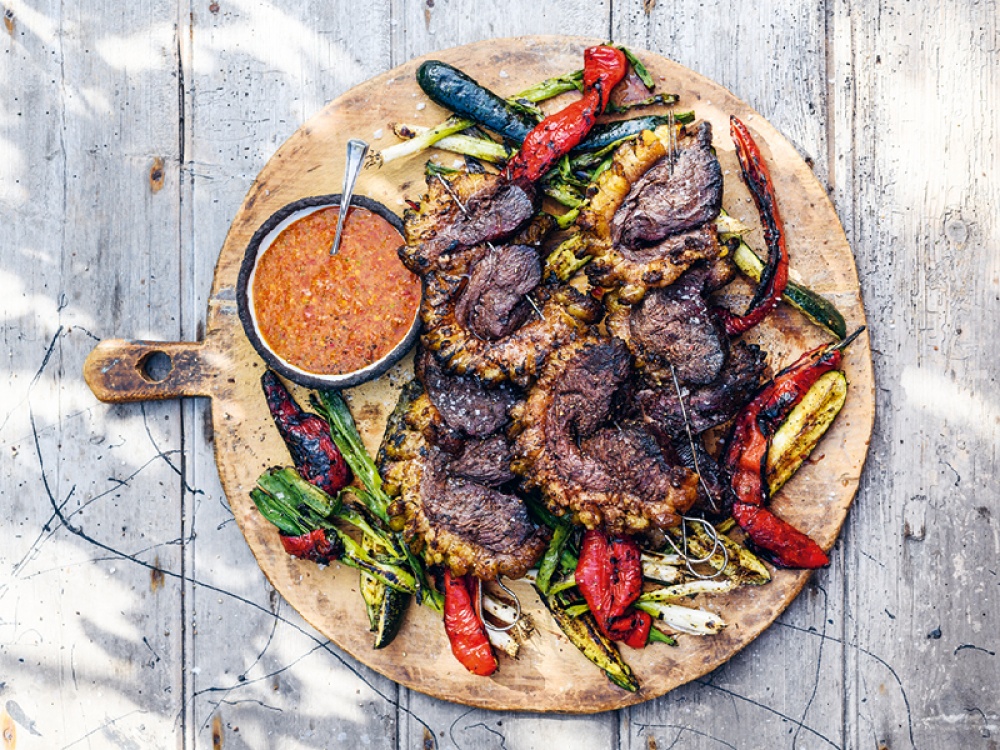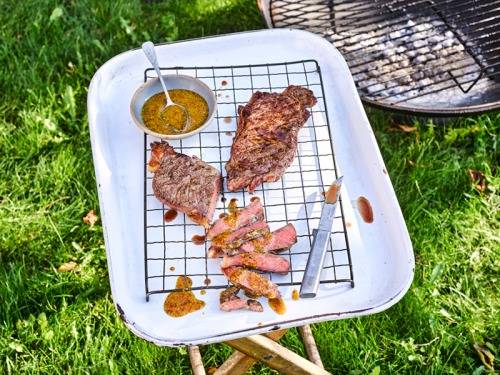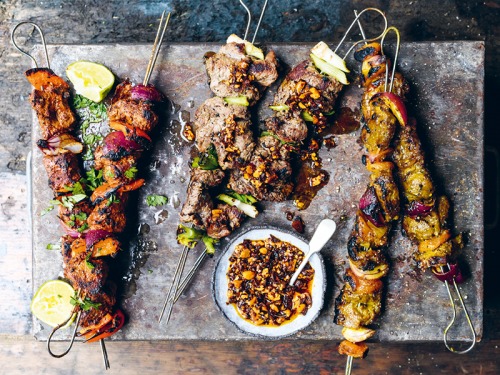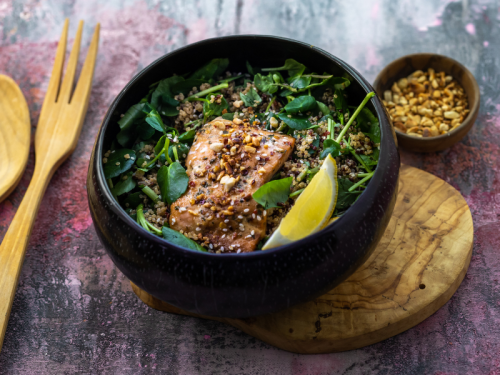Picanha piri piri, grilled veg

- 1–1.3kg picanha
- 2–3 courgettes, quartered lengthways
- 3 long red peppers, cut in half lengthways a bunch of spring onions
- a little olive oil
- flaked salt and freshly ground
- black pepper
- For the piri piri sauce
- 60g mixed red chillies, roughly chopped, seeds left in for more heat or removed for less
- 6 garlic cloves
- 3 fresh bay leaves, tough central stem removed
- a small bunch of flat-leaf parsley, leaves and stalks roughly chopped
- 100ml olive oil
- juice of 1 lemon
- ½ tsp smoked paprika
- a pinch of caster sugar
The day before you want to cook, dry-brine the steak. Cut deep slashes through the fat in a diamond pattern; this will help the fat render. Sprinkle plenty of salt over the steak and rub in. Place on a rack set over a tray then slide it into the fridge, uncovered, and leave overnight.
To make the piri piri sauce, simply put all the ingredients and a little salt and pepper into a mini food processor and blitz until smooth. You can also use a stick blender in a deep jug. The sauce will keep for at least three days in the fridge.
Fire up your barbecue ready for gentle indirect grilling.
Lay the steak, fat side up, as far from the fire as you can, and cook until the internal temperature reaches 40C; this may take an hour or so. A wired temperature probe is a useful bit of kit here as you won’t need to keep opening up the lid to check. Remove the picanha to a board and cut into two centimetre thick steaks with the grain. You should get about six–eight steaks. Curl each steak into a horseshoe shape, with the fat on the outside edge, and pierce two metal skewers through to secure. You should be able to line up two or three pieces on one double skewer. Cutting with the grain here is important as then, once you have your individual seared steaks, you can cut across the grain to eat.
Get your barbecue pumping hot, but still with an indirect set-up. Drizzle oil over the courgettes, peppers and spring onions and season with salt and pepper. Grill until lightly charred and just cooked, then set aside to keep warm.
Sear the steaks hot and fast for a few minutes directly over the fire, brushing with piri piri sauce as you cook. Keep turning the skewers so they brown evenly. Remove from the grill when they reach your desired internal temperature – 52C for rare, 56C for medium-rare, a little higher for medium.
To serve, pile the vegetables on a platter and top with the steaks. Serve the rest of the piri piri alongside.
How to dry-brine
Dry-brining is ridiculously easy and quick. Simply sprinkle salt all over the meat, including inside the cavity if you are cooking a whole bird, and briefly rub in. Place the meat onto a rack set over a tray, slide into the fridge, uncovered, and leave undisturbed while the salt does its magic. The rack allows air to circulate and prevents the meat from resting in its own juices. A rough rule of thumb is to use a level tablespoon of flaked sea salt per kilo (2lb) of meat. I try to leave the meat brining for 24 hours as standard, but even a couple of hours is worth doing if you are short of time. Something extra-large, a turkey for example, will happily brine for longer – 72 hours wouldn’t hurt. There’s no need to wash the salt off after brining. In fact I would encourage you not to as the salt will have slightly dried out the surface and a dry surface results in more effective Maillard reactions.







